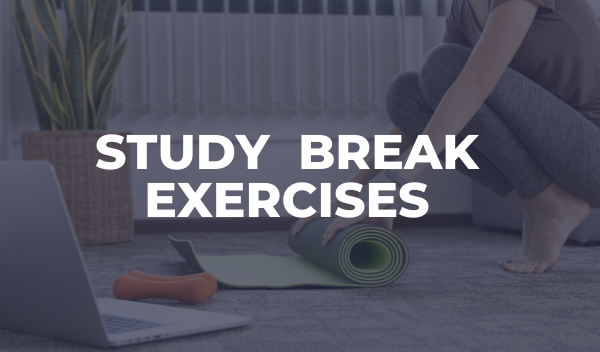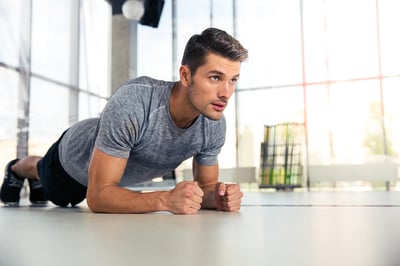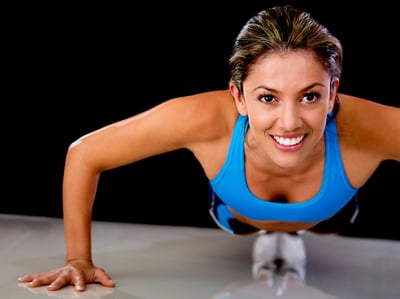
Ah, exercise. It helps you study stronger, sleep better, and can even make you happier.
With Physical Fitness and Sports Month upon us, here are a few simple exercises you can easily complete during a study break. Benefitting from improved sleep, a better outlook, and stronger recall, your future self will thank you!
Although these exercises aren't necessarily designed to help you win a marathon or take inches off of your waistline, they will certainly release endorphins, speed your metabolism, and make you feel more alert. If you don't have time for a run or spin class, schedule a few 5- or 10-minute study breaks throughout your day to #MoveInMay.
Triceps Dips
Use a chair (without wheels!), bench, bedside, stair or any other elevated surface to do a few sets of triceps dips. Along with improving balance, dips strengthen the muscles in your chest, shoulders, triceps, upper back, and lower back. Once you're feeling the burn in your arms, move on to a leg exercise.
Wall Sits
Literally, you just need an empty wall and clear floor space for wall sits. Even the back of a closed door would do! Wall sits are an isometric move that enhance your physical stability by strengthening quadriceps, glutes, hamstrings, and calves. When you first start wall sits, try to hold the position for at least 30 seconds. Set a goal to increase your sit time incrementally. Can you get up to 3 minutes?!

Forearm Plank
This is another "how long can you hold it" isometric move that can be done on the floor—with or without a yoga mat. Plank is a great way to strengthen your core, but it also works your hips, glutes, and shoulders. And since you should hold the move for a set amount of time, it can also improve your endurance. That being said, plank is all about form; so if you start to feel your back drop or your shoulders slump, it's time to cut the move short. Try for 30 seconds of perfection, and build from there!
Push-ups
It seems like most people either love push-ups or hate 'em. But no matter your feelings on the subject, push-ups get your blood moving. Whether you've got your knees on the floor or you're doing them one-handed, the muscles in your chest, back, shoulders, arms, core, and hips are all getting a solid workout. Again, clear the floor, focus on form, and see how many you can do. Then build from there!

Calf Raises
Squeeze in one last leg exercise before sitting back down to study. Although calf raises can be done while holding weights on a step, they can also be effective using only your body weight on a flat surface. If you aren't using a step, try to complete the raises slowly to make the exercise more challenging. Again, do as many as you can until it starts to burn, take a break, and then do a few more. As with most exercise, the more you do, the more you'll be able to do!
Remember: a little bit of movement can go a long way—especially if you're consistent with it. Prioritize even a small amount of exercise, and you will reap the benefits of improved physical fitness and reduced stress.
Now that you know the exercises to do, take a look at how exercise can help you study stronger and remember more!


